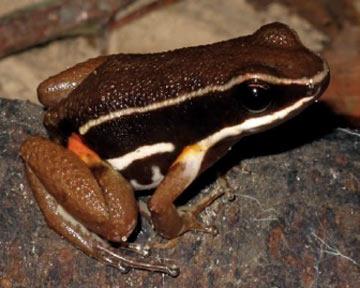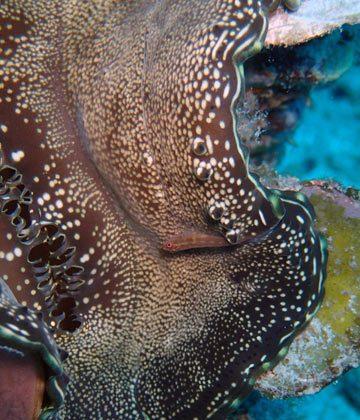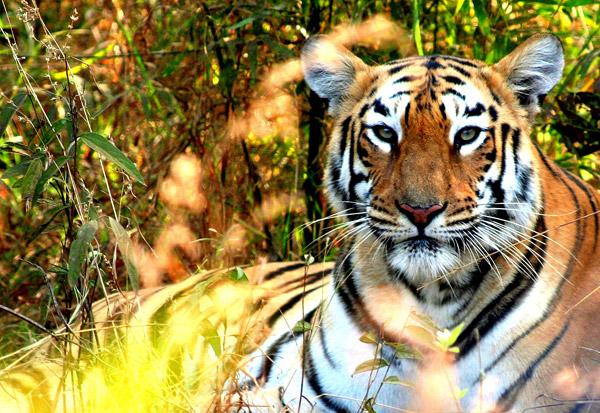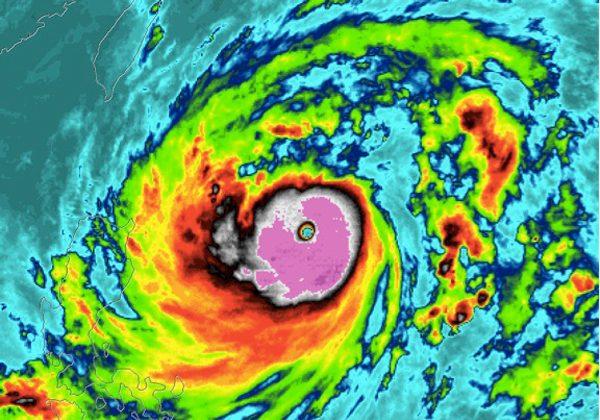Protecting the biodiversity of the Amazon basin is an immense undertaking, and to its credit the Brazilian government has a set procedure for doing so. However, there are gaps in the process that may prevent the authorities from fully protecting the species that call this place home. To investigate this, a recent study in mongabay.com’s open-access journal Tropical Conservation Science uses as an example the brilliant-thighed frog (Allobates femoralis), a species that is found across the Amazon Basin—including the area surrounding the soon-to-be dammed Xingu River.
Before licensing any developmental project, Brazilian environmental policy requires the compiling of species inventories for environmental impact assessment reports and subsequent environmental monitoring studies. However, these regulations do not take the evolutionary potential of species into account.
This goes against the shifting global conservation trend towards retaining evolutionary and ecological processes. In order to conserve these processes, the authors of the study write, we need to assess how different members of the same species in a given area are differentiated from one another. We can then use the knowledge of this genetic variation to assign protection priorities to different sections of a species’ distribution. Both the gray wolf (Canis lupus) and the Florida panther (Puma concolor coryi) have, for instance, benefited from policies that take evolutionary potential into consideration.
The researchers thus applied this to the case of the brilliant-thighed frog in the Amazon rainforest. Brazil is damming tributaries of the Amazon River, and the authors analyzed how this widely-spread frog differed across various regions that divide adjacent waterways, called interfluves. This includes rivers undergoing damming, such as the Xingu River, which is threatened by the Belo Monte power plant.
Over four years, the researchers sampled 120 frogs in 14 locations, analyzing their DNA as well as their calls. They found significant genetic divergence between populations in different interfluves.
They also discovered that certain frogs at the western bank of the Xingu River had a distinct six-note call, which differed from the four-note call found in frogs elsewhere. These particular frogs differed genetically from all the others whose calls were characterized by the four-note call pattern, even those in the same interfluve.
As such, the researchers caution that the construction of the Belo Monte dam will potentially harm a new genetic lineage of the frog, and that those behind its construction should take this into account. Thus, they call for changes to legislation to include guidelines for assessing intraspecies diversity.
This would have wider consequences, considering that this genetic variation is likely not unique to neo-tropical frogs, and that the Amazon is a global hotspot of biodiversity. To allow the Brazilian authorities to better focus their conservation efforts, the researchers say that they need to take intraspecies information into account. Fortunately, according to the study, although this data is not often used, it is “often available, in the process of being generated, or easy to obtain.”
Citations:
- Simões, P. I., Stow, A., Hödl, W., Amézquita, A., Farias, I. P., and Lima, A. P., 2014. The value of including intraspecific measures of biodiversity in environmental impact surveys is highlighted by the Amazonian brilliant-thighed frog (Allobates femoralis). Tropical Conservation Science Vol.7 (4): 811-828
This article was originally written and published by Jose Hong, a contributing writer for news.mongabay.com. For the original article and more information, please click HERE.




Friends Read Free